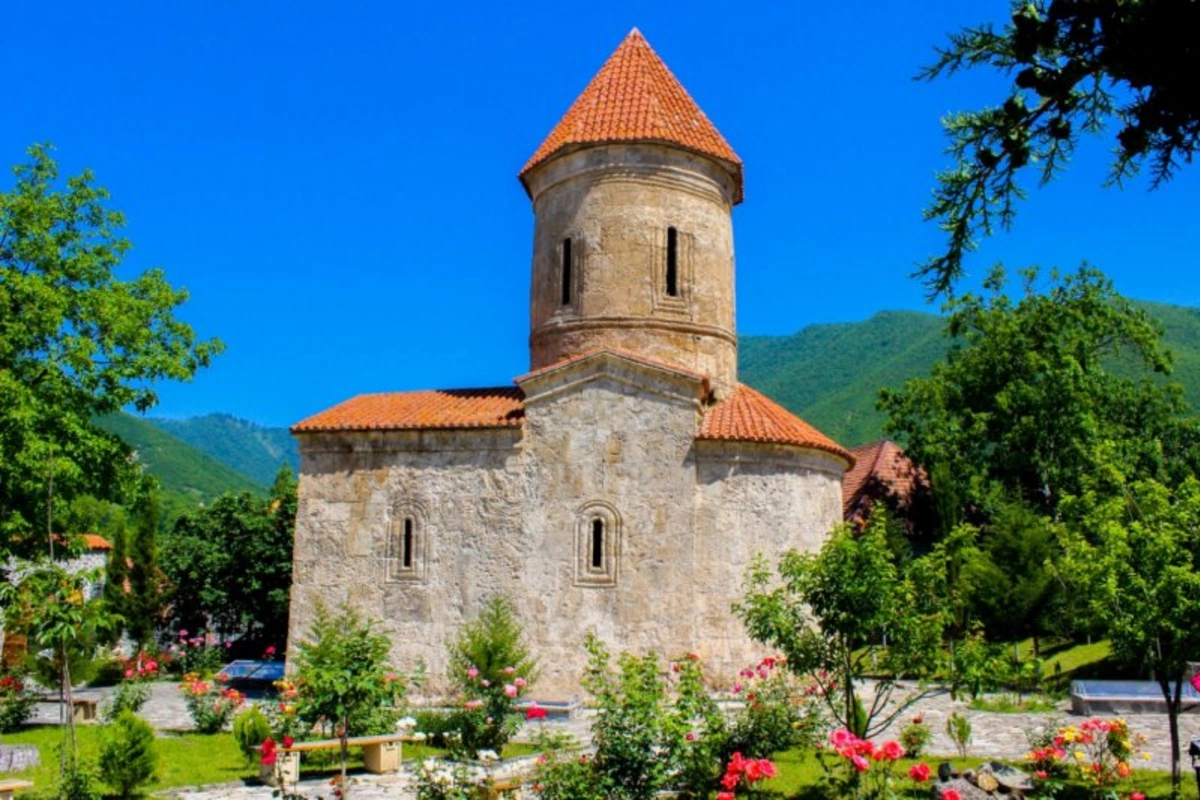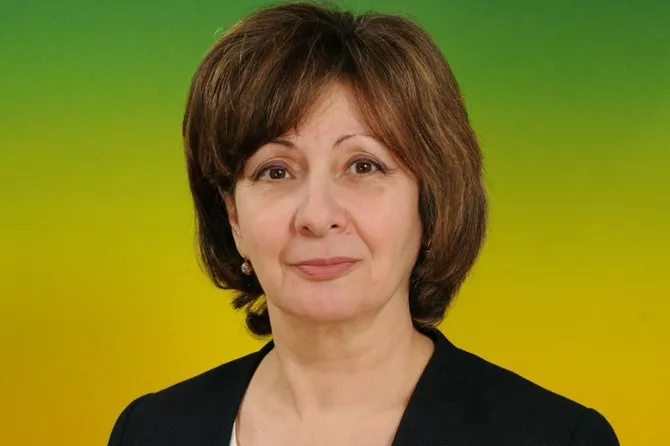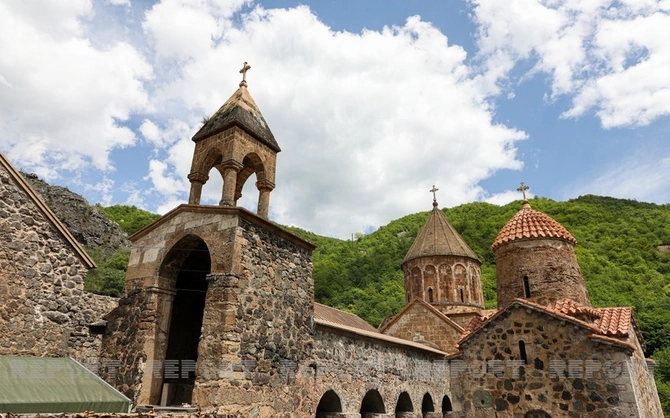
Photo credit: albaniandailynews.com
As the South Caucasus reclaims its historical narrative in the post-conflict era, one of the most overlooked yet foundational elements of the region’s heritage is once again coming into focus: Caucasian Albania. This ancient Christian civilization, once thriving across what is now Azerbaijan, has long been obscured by centuries of imperial manipulation and religious appropriation. From tsarist edicts to institutionalized falsification, the legacy of the Albanian Apostolic Church was nearly erased from the pages of global history. In this exclusive interview for The Caspian Post, we speak with Dr. Hadjar Verdiyeva, Doctor of Historical Sciences and one of the leading voices in the study of Caucasian Albania. Her work sheds light on the systemic erasure of Albanian Christian heritage, the geopolitical role of the Armenian Gregorian Church in this process, and Russia’s imperial strategy of reengineering religious identities in the Caucasus.

- The Albanian Apostolic Church was a fundamental pillar of early Christianity. Why does the global academic community still know more about Armenian legends and myths than about the documented history of Caucasian Albania?
- This question touches on fundamental issues of historical justice and academic integrity. The Albanian Apostolic Church is indeed among the world’s earliest Christian institutions, rooted directly in apostolic preaching. Christianity was brought to the territory of Caucasian Albania by Apostle Elisha, a disciple of Apostle Thaddeus, in the 50s of the first century AD. We possess both written records and archaeological evidence confirming the existence of a developed Christian tradition in this region long before the Christianization of the Arsacid Armenian kingdom, Georgia, or Rus’.

Photo credit: Report.az
However, over the centuries-particularly beginning in the 19th century, when the Russian Empire started using religious institutions as tools of colonial policy-a systematic process of erasing, replacing, and destroying Albanian heritage began. A striking example is the 1836 decree transferring the sanctuaries and structures of the Albanian Apostolic Church to the control of the Armenian Gregorian Church. This decision was catastrophic for the autocephaly of the Albanian Church and the preservation of the historical memory of the Caucasian Albanians. The Armenian Gregorian Church used this opportunity to launch an aggressive campaign of assimilation and renaming of Albanian shrines-deliberately erasing Albanian heritage as a part of regional history. Albanian churches were declared “ancient Armenian,” inscriptions were defaced, rewritten, or removed, and entire monastic complexes like Gandzasar and Dadivank began to appear in Armenian sources as purely Armenian monuments.
- Why does the global scholarly community still know so little about the Albanian Apostolic Church and its prominent role in early Christian history? There are several compelling reasons.
- First, for decades, the voice of falsifiers was louder than the voice of truth. The Armenian diaspora, particularly well-rooted in the West, succeeded in building powerful centers of influence-academic, cultural, and media-based. With strong financial backing, they published hundreds of pseudo-academic works, organized exhibitions, and produced films promoting the myth of “Great Armenia” and its allegedly ancient presence in territories where Armenians historically either did not exist or arrived only in the first third of the 19th century as settlers. This created a thick ideological fog, deliberately obscuring the true historical realities of the Caucasus.
The second, equally important factor was the legacy of Soviet historiography. Under ideological constraints and geopolitical agendas, Caucasian Albania as a model of early Christian statehood was either silenced or artificially absorbed into the “Armenian cultural sphere.” This tendentious interpretation, imposed on the academic world, left a lasting impact and shaped a persistent misconception that continues to be reproduced in scholarly circles.
Thirdly, there is a severe lack of translations of foundational Azerbaijani and Turkic research into leading world languages. Many profound and well-documented studies by Azerbaijani scholars remain inaccessible to English-, French-, and German-speaking academic communities. The absence of systematic promotion of these works on the international stage prevents a balanced view and leaves room for the continued spread of distorted narratives.
All of this makes not only the academic rehabilitation of Caucasian Albania essential, but also the launch of a broad-scale informational and scholarly campaign to restore historical truth. Truth not only deserves protection-it needs a voice.
- Is there a real chance today for the international recognition of the Albanian Apostolic Church as a unique historical and cultural institution?
- Absolutely. And these chances are becoming increasingly realistic against the backdrop of current geopolitical, cultural, and academic shifts both in the region and globally. Recognizing the Albanian Apostolic Church not merely as a religious organization, but as a historical and cultural institution, is a key step toward restoring historical justice and decolonizing the cultural memory of the South Caucasus.
It is encouraging to see that the international academic environment is beginning to revisit historical narratives imposed during the colonial era. As global interest grows in the cultural heritage of previously “subsumed” peoples, ancient civilizations like Caucasian Albania are finally emerging from the shadows. Today, new research diverging from the Soviet-imperial paradigm is being conducted in academic institutions across Europe, Türkiye, Israel, and even some Russian schools.
Moreover, the restoration of Albanian churches in the liberated territories of Azerbaijan, including in Karabakh, is strengthening the evidentiary foundation of the region’s independent cultural history. One example is the church at Khudavang, long presented by the Armenian Gregorian Church as “ancient Armenian,” despite the fact that its epigraphy, architecture, and ornamentation are distinctly Albanian.
Importantly, international legal and cultural institutions-including UNESCO, the European Union, and ICESCO-are now more engaged in recognizing and promoting unique cultural heritage, especially in post-conflict zones. Presenting the Albanian Apostolic Church as a lost link in global Christian civilization could become a major contribution from Azerbaijan to the safeguarding of humanity’s shared heritage.
Finally, we must remember that the fight for recognition of the Albanian Church is not merely a historical issue-it is a question of future national consciousness, cultural sovereignty, and the right of every people to their historical truth. This is part of a broader global movement to reclaim stolen identities, and Azerbaijan stands here as both custodian and protector of the multi-layered cultural code of the Caucasus, which was instrumental in shaping modern civilization.
Thus, not only do opportunities exist for the international recognition of the Albanian Apostolic Church as a unique historical and cultural institution-they are growing. This requires continued scholarly diplomacy, cultural initiatives, international forums, and, above all, systematic efforts to protect and promote this heritage-from research centers to global organizations.
- The Armenian Gregorian Church and Russian imperial policy: where does faith end and geopolitical manipulation begin?
Armenian Apostolic Church / Wikipedia
- Let me be direct: manipulation begins when one church is declared “superior” and another “inferior,” when historical sources are replaced by myths, and when the sanctuaries of one civilization are appropriated by another.
Imperial Russia, entering Northern Azerbaijan in the 19th century, did not come as a neutral power. It arrived with a clear civilizational agenda of Christianization, control, and division. The Armenian Gregorian Church, which had proclaimed its “Orthodox” essence to the Romanov Empire at the end of the 18th century through the “Argutinsky fabrication,” positioned itself as a convenient tool for executing Russia’s colonial policy in the Caucasus mega-region-despite its theological divergence from Eastern Orthodox dyophysitism. Nonetheless, the empire, eager to establish political dominance in the Caucasus, embraced the Armenian factor as an ethnoreligious instrument.
The decree of April 10, 1836, which subordinated the Albanian Apostolic Church to the Armenian Gregorian Church, became in essence a legal mechanism for destroying the national-religious identity of the Albanians-descendants of the Caucasian peoples who adopted Christianity in the 1st century AD, at a time when Armenians still inhabited regions near the Euphrates. From the 19th century onward, the Armenian Church not only administered Albanian sites but also actively seized churches, falsified inscriptions, destroyed archives, and altered the architectural identity of Albanian sanctuaries.
What could have been an act of religious tolerance and unity among Christian peoples turned instead into a tool of ethnocultural expansion. Faith was replaced by doctrine, sanctuaries turned into political outposts, and history into propaganda.
The imperial support for the Armenian Gregorian Church in its appropriation of Albanian religious heritage was not an act of spirituality but of geopolitics. This is where faith-as a personal and collective experience of the divine-ends, and conscious historical manipulation in the service of political ambition begins. It was a textbook example of how the church can be used as a “fifth column” of empire-undermining historical realities to manufacture new myths about borders, ethnic dominance, and civilizational supremacy.
Today, as academic research breathes life back into the forgotten pages of Caucasian Albanian history, we face the urgent task of restoring memory and historical justice. The Albanian Apostolic Church is not a relic of the past. It is a living part of Azerbaijan’s spiritual and cultural code-a core element of its identity, ready once again to take its rightful place in the global Christian historical narrative.
Share on social media